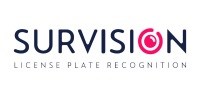Survision: Let’s Be Accurate About LPR Accuracy
Most LPR Providers Talk About 99%+ Accuracy Level but We All Know This Is Not So Easy

First, what does “LPR Accuracy” mean?
Accuracy level in license plate recognition (LPR) refers to the percentage of correctly recognized license plates out of the total number of license plates captured by the system.
In LPR, high accuracy is essential to ensure the lowest levels of errors and false readings, which could lead to incorrect information, customer complaints, higher operational costs, and potential legal issues.
However, 100% accuracy is a goal worth reaching since every millimetric advance in this field represents many benefits and savings for operators and integrators.
Not an easy feat
LPR accuracy level is impacted by an extensive list of very different factors, such as lighting conditions, camera angle and position, font type and size, the distance between the camera and the license plate, Environmental factors, and of course, camera quality.
The 100% accuracy goal is blurred by conditions that make the license plate total surface visually unavailable, for example:

Obstruction: Whenever the license plate is damaged, broken, dirty, obscured, glared, or obstructed by a foreign object, it will be impossible to read.
Excessive graphics around the plate make it impossible for the LPR system to determine which graphics belong to the license plate and which graphics do not.
Many of these factors are not equipment-related but circumstantial/installation-related, impossible to predict or cover; that is why it is very complex to talk about accuracy level as a feature of the camera itself.
Despite these difficulties, LPR’s great attractiveness and convenience made operators -not wait- for the 100% accuracy mark as they discovered (many) cases where LPR worked OK even if not all characters (N) have been correctly read; indeed, most of the projects consider validating plates on N-1 (allowing one missing character) or even N-2.
They called it “Fuzzy Logic”, a probabilistic workaround that made LPR useful even when not 100% accurate. Fuzzy Logic approach created “accuracy categories” where N is the top level (more strict and won't accept less than 100% of the characters reading), and N-1 is a secondary level, appropriate for many, useless for others.

Under this approach, it is possible to have different performance profiles on different categories (N, N-1, N-2, etc).
As you can see, far from being a simple number, LPR accuracy is a complex matter, which is why we don’t talk lightly about it and never mention any number in our sales pitch; however, this is a core issue and we have a lot to say about it.
This is why we decided to share our accuracy scores on real case scenarios, including location, sample size, time of the day, N and N-1 values.


These values (Europe and USA) come from real sites. Each installation can provide different values depending on many factors.
About SURVISION 
SURVISION is a global leader in License Plate Reading (LPR). Since 2001, with solutions being deployed in over 30 countries with more than 20,000 sensors thanks to a network of 300 Value Added Integrators. The quality of its R&D team allows SURVISION to work with world-class integrators for a complete set of innovative solutions for Smart-City, Smart-Parking, law enforcement, toll road collection, car-park management, and for local authorities.









Comments
There are no comments yet for this item
Join the discussion